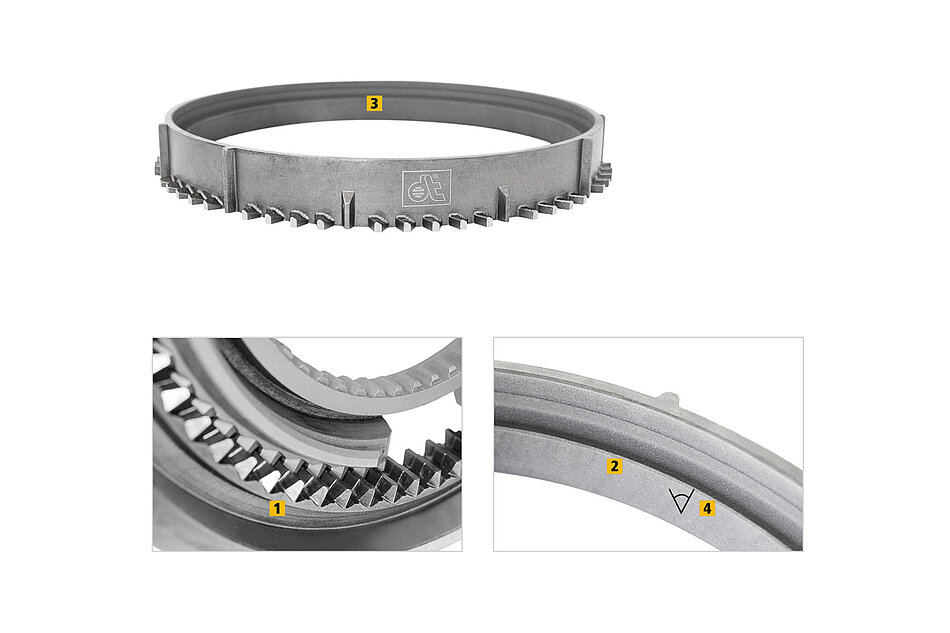Product Portrait
Synchronizer gears
Suitable for: trucks and buses
Due to the chamfering on the end faces of the shift collar and synchronizing ring, the synchronizer ring is turned back. The tooth spaces become free and the shift collar can be slid over the teeth. The gear is engaged. Quiet synchronization is guaranteed by precisely coordinated gear teeth.
The synchronizer rings are forged. This production method ensures a more consistent tooth form with high strength.
The friction surfaces of the synchronizer rings are coated with Molybdenum. This protective layer is characterized by excellent frictional properties and guarantees minimum wear during the synchronization.
In addition to synchronizer rings, DT® Spare Parts also offers all standard gearbox parts.

Construction of synchronizer gears
- Gear teeth
- Molybdenum coating
- Friction surface
- Clamping cone
